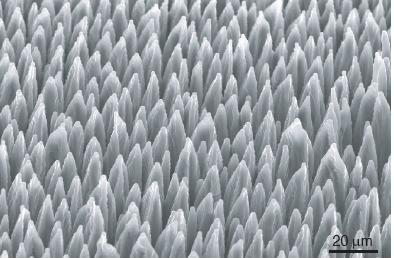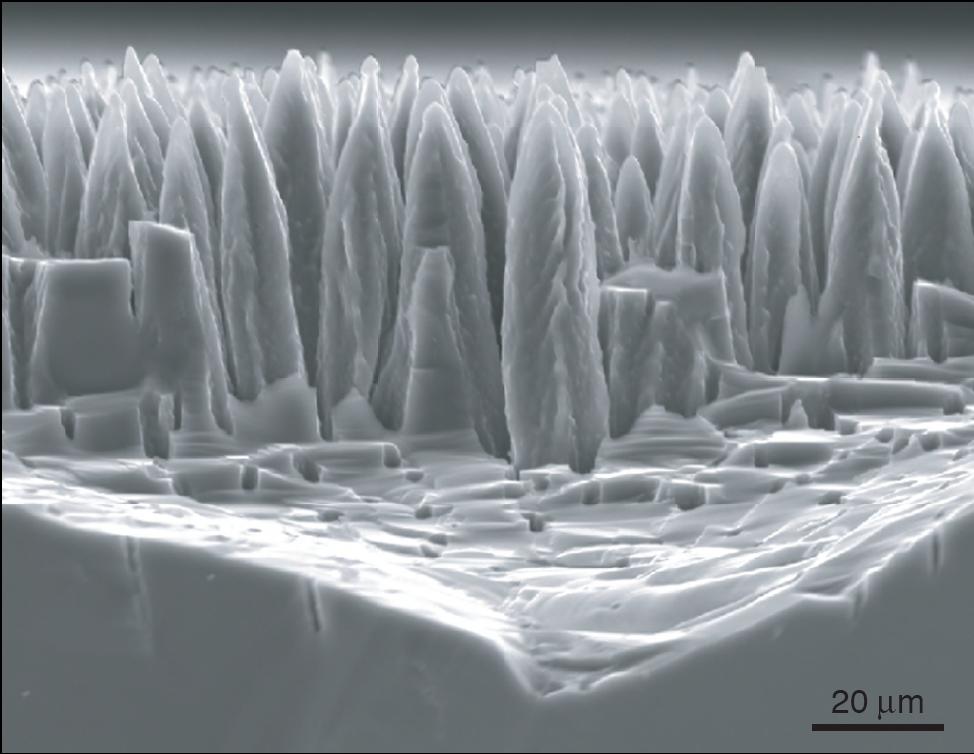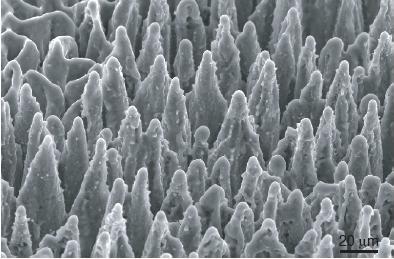We use laser techniques for the fabrication of microspikes on Si surfaces. By irradiating Si surfaces with multiple laser pulses in an SF6 environment, we can create microspikes which cover the irradiated area of the sample.

The laser beam (Nd:YAG, 266 nm, 4 ns) is focused by a 20-cm focal length lens on the Si surface, such that the focus of the beam lies behind the sample surface. The Si sample is placed inside a vacuum chamber, which is pumped down to 10-4 mbar and filled with SF6 gas at 500 mbar. The laser beam travels through a quartz window inside the vacuum chamber and irradiates the Si surface.
SEM image of microspikes formed on the surface of Si by irradiating the surface with 1500 nanosecond laser pulses at 266 nm in SF6.
SEM image of cross section of microspikes formed on the surface of Si by irradiating the surface with 1500 nanosecond laser pulses at 266 nm in SF6.
SEM image of microspikes formed on the surface of Si by irradiating the surface with 1500 nanosecond laser pulses at 1064 nm in SF6. Longer wavelengths result in bigger and less densely packed microspikes.


